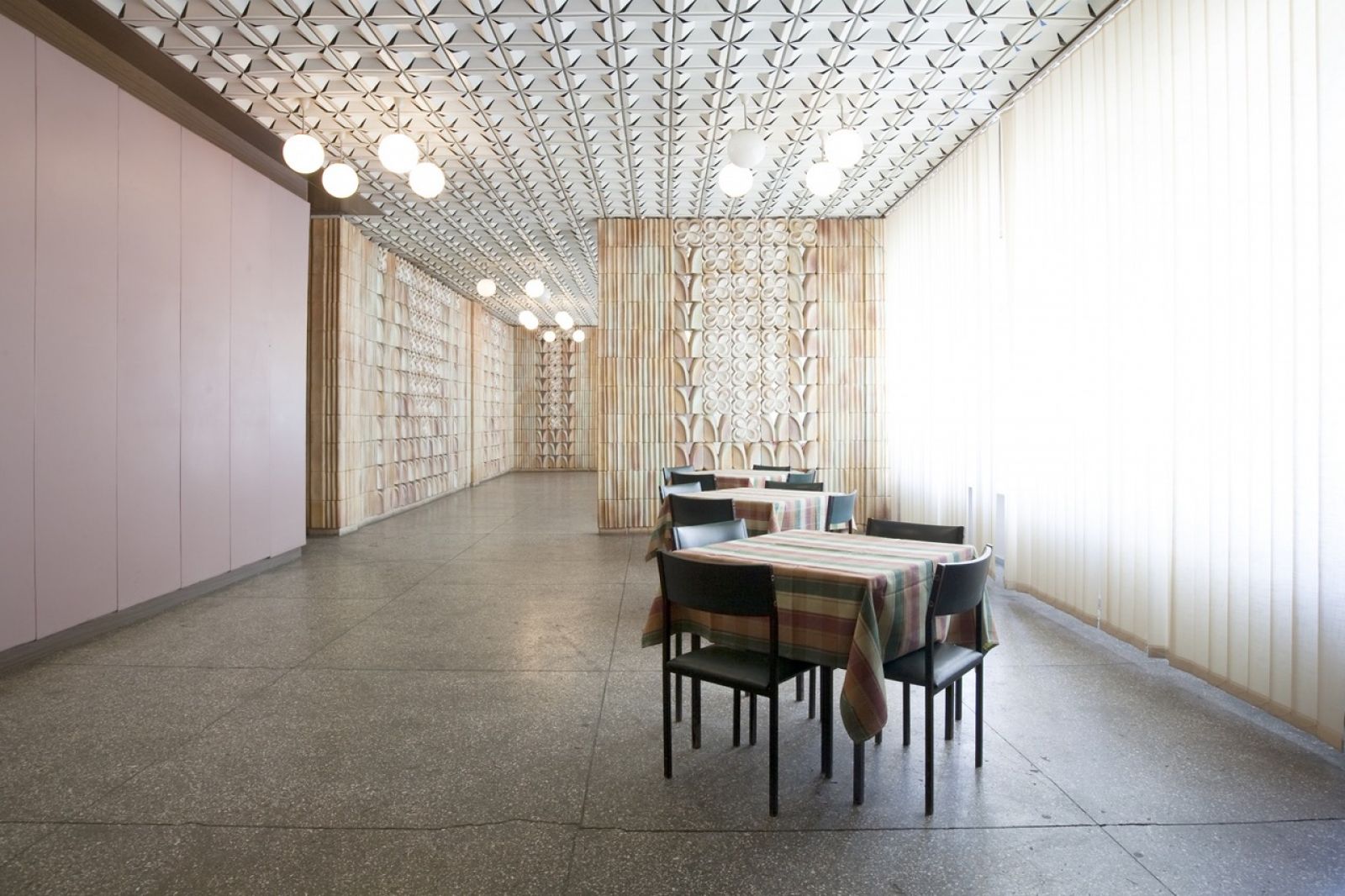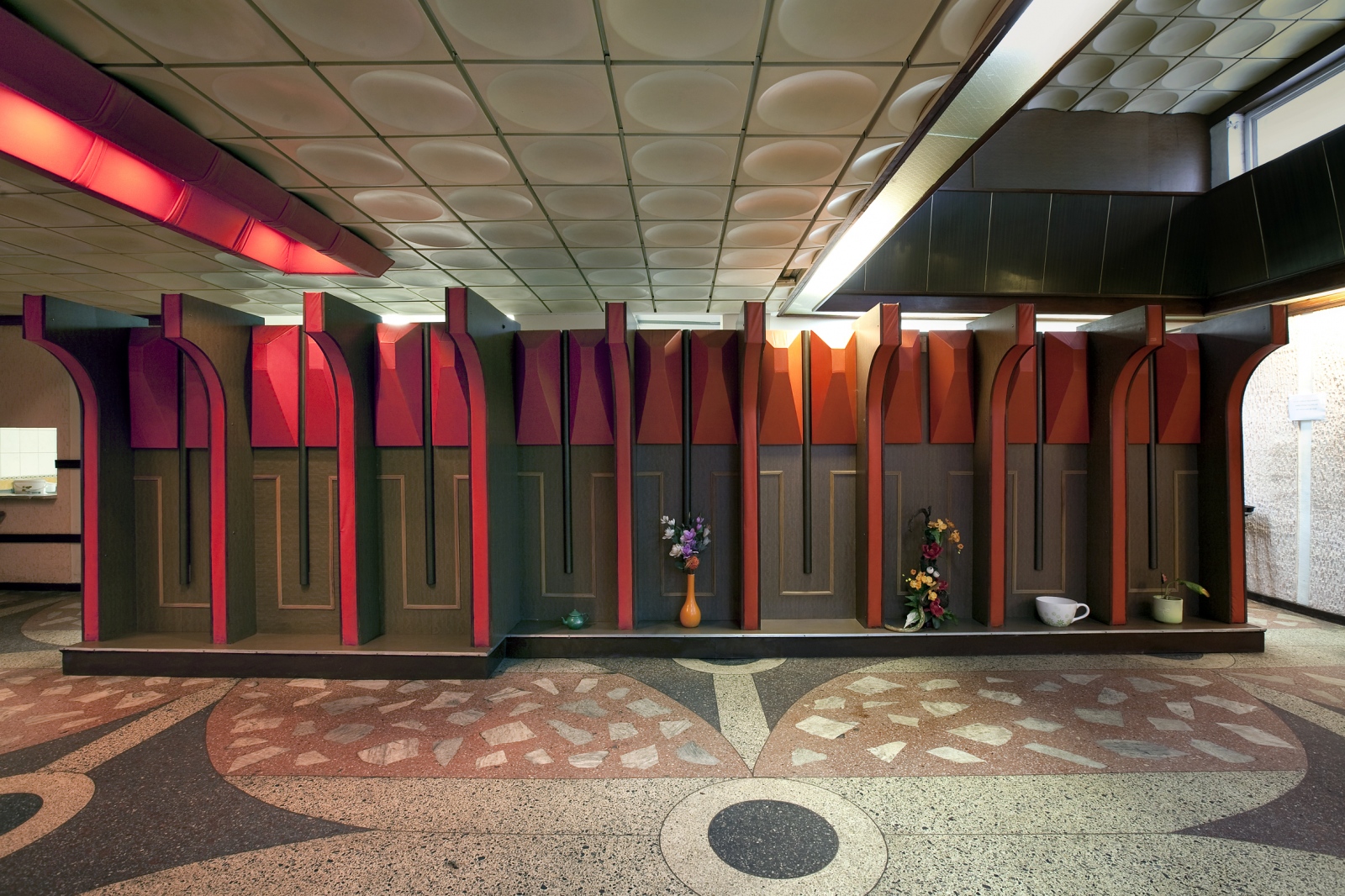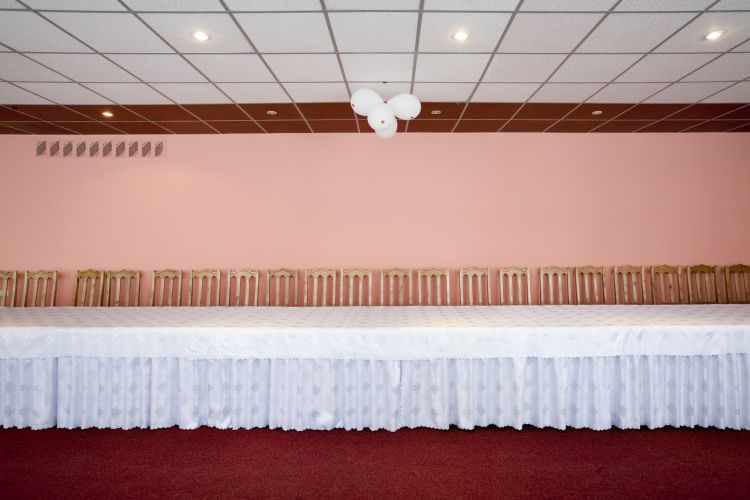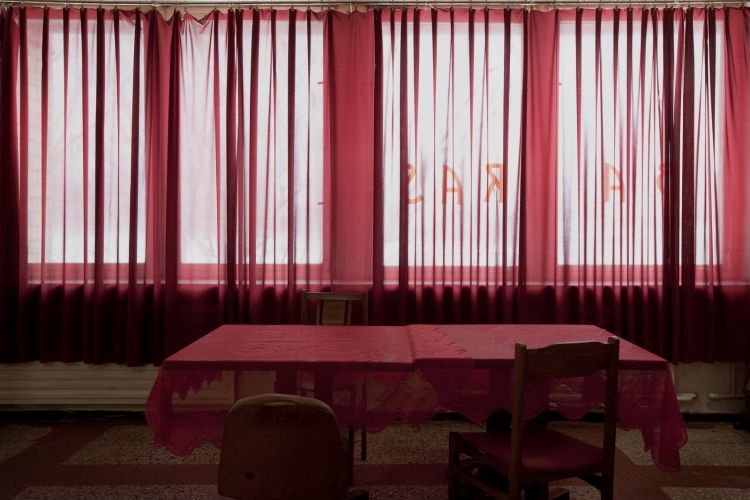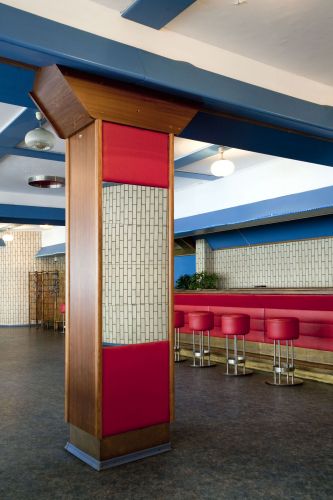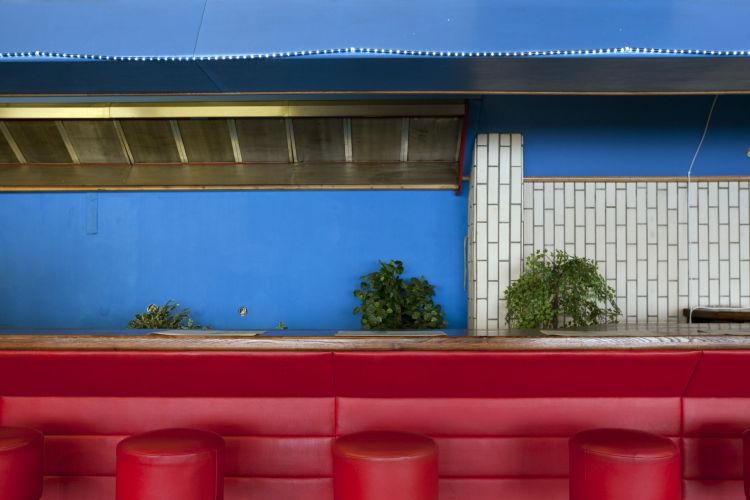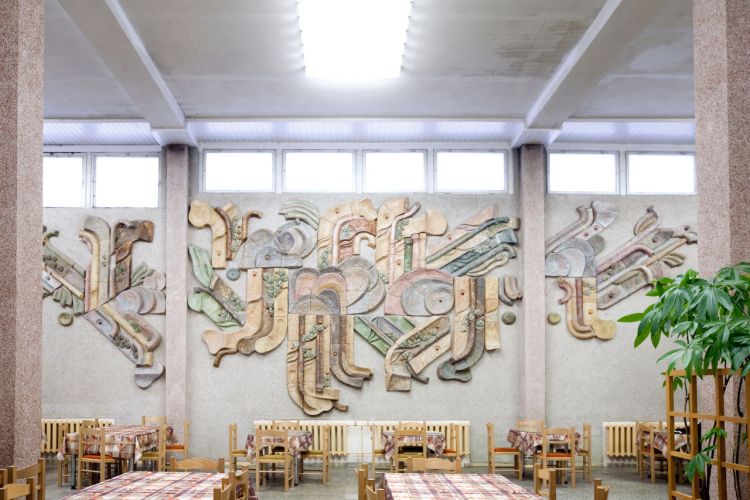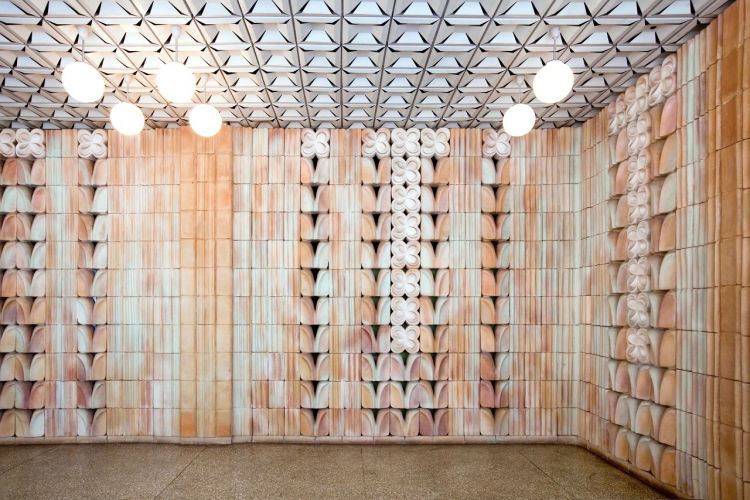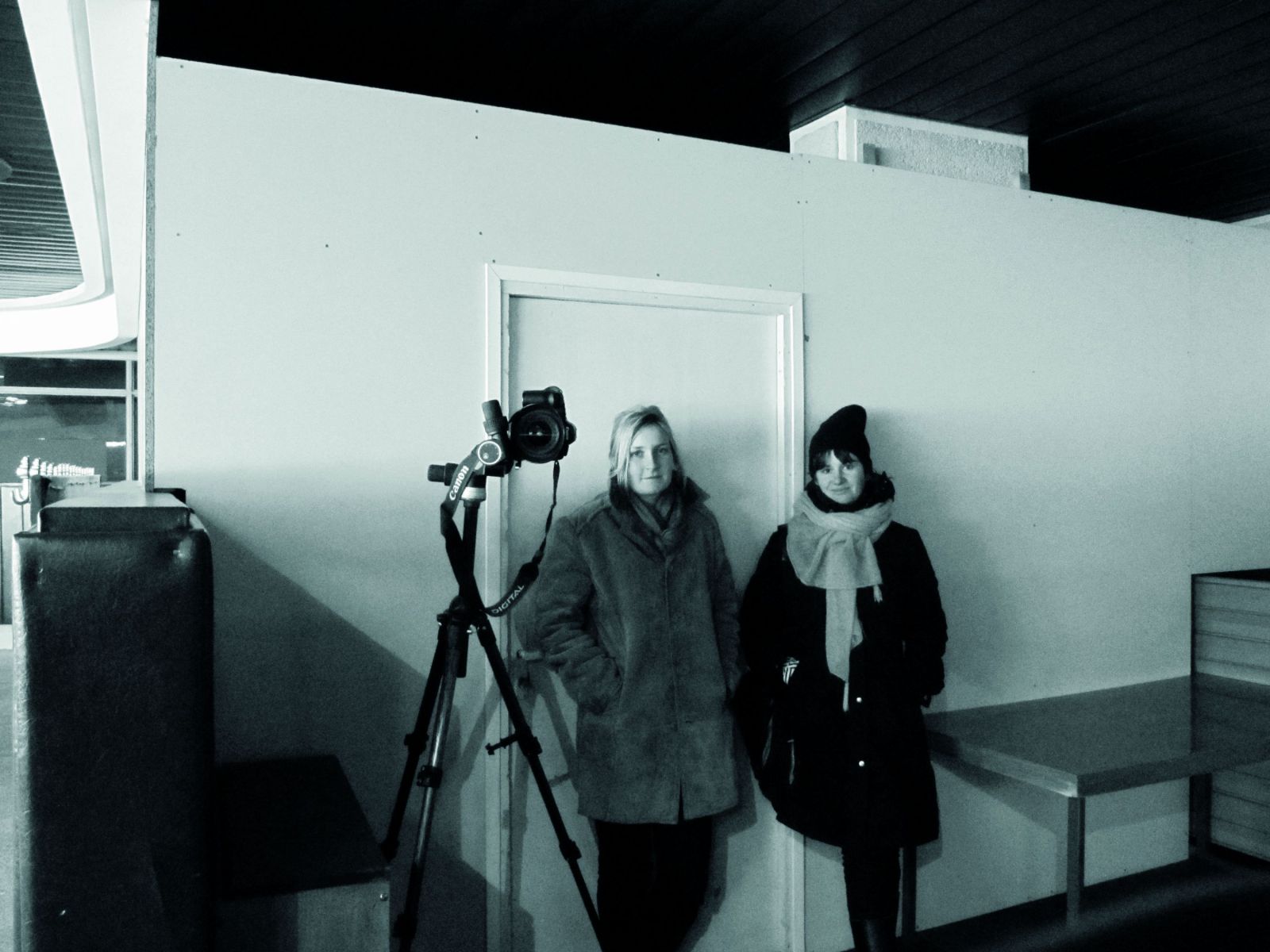The real pride of the canteen of Kaunas Dairy in Vilnius is the ceiling decor of flower ornaments and the partition walls decorated with white and beige ceramics, reminiscent of the meadows where cows graze and produce the milk used in the factory.
Abandoned Canteens, Lithuania
A Little Compote on the Side?
In her hometown Vilnius, in Lithuania, Indré Klimaitė started documenting a series of abandoned canteens dating back to the Soviet era, exploring the visual heritage of the glorious days of the proletariat.
EVERYTHING USED TO BE MUCH BETTER
Memory lane or not. Every age brings forth some kind of beauty we wish we’d preserved – once it’s all gone and too late anyway. Compote for instance, who still picks that up from the buffet? While most people only sigh and mumble ‘the good old days’, artists sometimes are willing to dive headfirst into a project to retrieve things they think are worthwhile. Graphic designer Indré Klimaité loves canteens and sadly watched too many of them disappear from the cityscape of old Vilnius. As a fitting subject for her exam project ‘kompotas’ she documented 16 canteens and spoke to their customers and staff. Indrė started at the Academy of Fine Arts in Vilnius and later moved to The Hague (the Netherlands) to finish her Master’s in ‘Type and Media’ at the Royal Academy of the Arts.
Although dating from the aftermath of the Soviet era, the ‘Spaudos rūmai’ canteen tries to impose an image of glamour and sophistication on its visitors.
The canteen of Energetikos Remontas (a company that builds electricity turbines) in Vilnius boasts all the colours and form language of a lavish decoration program from the 1970s.
She took on the Vilnius Canteen project with great passion, aiming to preserve and document the memory of the beautiful canteens while investigating ‘current social relationships’. This type of social project usually ticks the boxes of selection committees of institutions like the Netherlands Foundation for Visual Arts, Design and Architecture, and Stroom The Hague, who indeed decided to subsidize the project. This resulted in the ‘Canteen Guide’ and a website (kompotas.com), both compiled and designed by Indrė Klimaitė.
Prie Neries remains all authentic. Classic white table cloths over wooden tables enhance the ‘dinner’ feel of this canteen, overlooking the Neris River.
Unfortunately, not many former canteens are left in the old center of Vilnius. They’ve fallen prey to a blind drive towards modernization and have been refurbished into pizza or kebab places, behind cheap white windows.
In companionship with photographer Marleen Sleeuwits, she set off on a two-week exploration trip. The two researchers took directions from taxi drivers, who always on the up and up about the most interesting attractions, from the official tourist office ones to the shadiest spots. The drivers got a kick out of guiding Indré and Marleen to the forlorn canteens of the Soviet era. All in all, they produced in the region of 200 photos per location, portraying the serving ladies and documenting the best dishes on the menu.
Food explains a lot about the culture of a country. During the Soviet days the canteens functioned as a propaganda tool. Not only did they provide affordable food for the masses, but the interiors reflected prosperity and wellbeing through the choices for rich materials and luxurious details. Because they were so intimately connected to ideology, the canteens now resemble small museums, preserving a way of life and evoking melancholy as well as distrust in many Lithuanians of the older generations. Even though they are now liberated from the Soviet yoke, to Lithuanian workers and clerks the menu hasn’t really improved much in the course of the last 50 years.
This simple conclusion was reached by Indré and her team during their culinary expedition. They absorbed 110 servings of compote (amounting to more or less two buckets of the sweet and fluid stuff). Unfortunately, the expertise of the site kompotas.com doesn’t extend towards honoring the inheritance of the makers, architects, furniture manufacturers or style trends behind the forsaken utilitarian architecture. Nevertheless – and as you may concede from looking at these pages – Marleen Sleeuwits brought home a series of amazingly enticing pictures of interiors presenting the ‘camp’ image.
This production was published in WOTH issue no 9 still available via our shop
